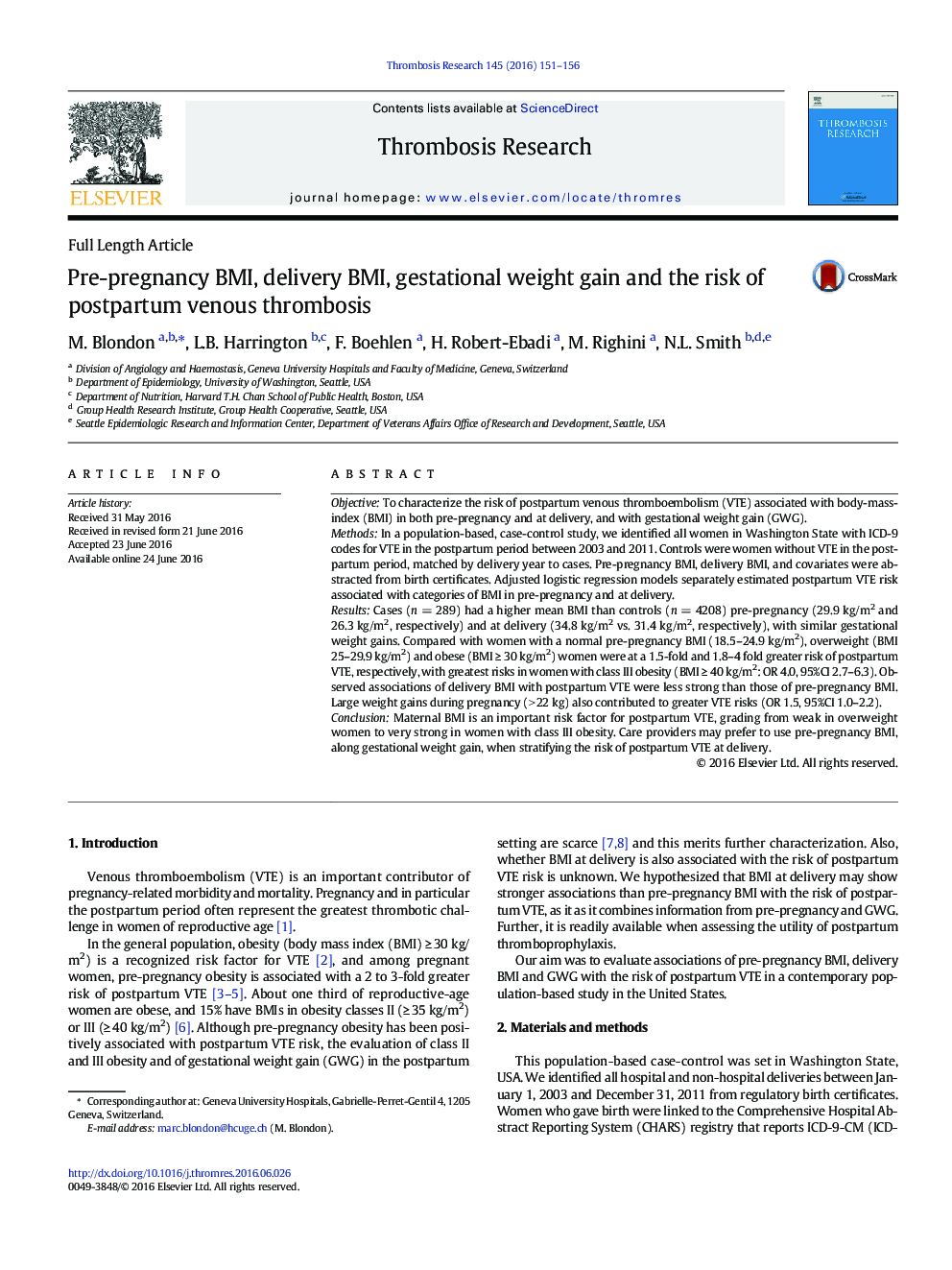| کد مقاله | کد نشریه | سال انتشار | مقاله انگلیسی | نسخه تمام متن |
|---|---|---|---|---|
| 3026881 | 1579198 | 2016 | 6 صفحه PDF | دانلود رایگان |

• Pre-pregnancy BMI has a gradual linear association with risks of postpartum VTE.
• Women with BMI > 40 kg/m2 have a 4-fold increased risk of postpartum VTE.
• Large gestational weight gains may further contribute to the risks of postpartum VTE.
• Delivery BMI does not seem to be a better measure of VTE risk than pre-pregnancy BMI.
ObjectiveTo characterize the risk of postpartum venous thromboembolism (VTE) associated with body-mass-index (BMI) in both pre-pregnancy and at delivery, and with gestational weight gain (GWG).MethodsIn a population-based, case-control study, we identified all women in Washington State with ICD-9 codes for VTE in the postpartum period between 2003 and 2011. Controls were women without VTE in the postpartum period, matched by delivery year to cases. Pre-pregnancy BMI, delivery BMI, and covariates were abstracted from birth certificates. Adjusted logistic regression models separately estimated postpartum VTE risk associated with categories of BMI in pre-pregnancy and at delivery.ResultsCases (n = 289) had a higher mean BMI than controls (n = 4208) pre-pregnancy (29.9 kg/m2 and 26.3 kg/m2, respectively) and at delivery (34.8 kg/m2 vs. 31.4 kg/m2, respectively), with similar gestational weight gains. Compared with women with a normal pre-pregnancy BMI (18.5–24.9 kg/m2), overweight (BMI 25–29.9 kg/m2) and obese (BMI ≥ 30 kg/m2) women were at a 1.5-fold and 1.8–4 fold greater risk of postpartum VTE, respectively, with greatest risks in women with class III obesity (BMI ≥ 40 kg/m2: OR 4.0, 95%CI 2.7–6.3). Observed associations of delivery BMI with postpartum VTE were less strong than those of pre-pregnancy BMI. Large weight gains during pregnancy (> 22 kg) also contributed to greater VTE risks (OR 1.5, 95%CI 1.0–2.2).ConclusionMaternal BMI is an important risk factor for postpartum VTE, grading from weak in overweight women to very strong in women with class III obesity. Care providers may prefer to use pre-pregnancy BMI, along gestational weight gain, when stratifying the risk of postpartum VTE at delivery.
Journal: Thrombosis Research - Volume 145, September 2016, Pages 151–156